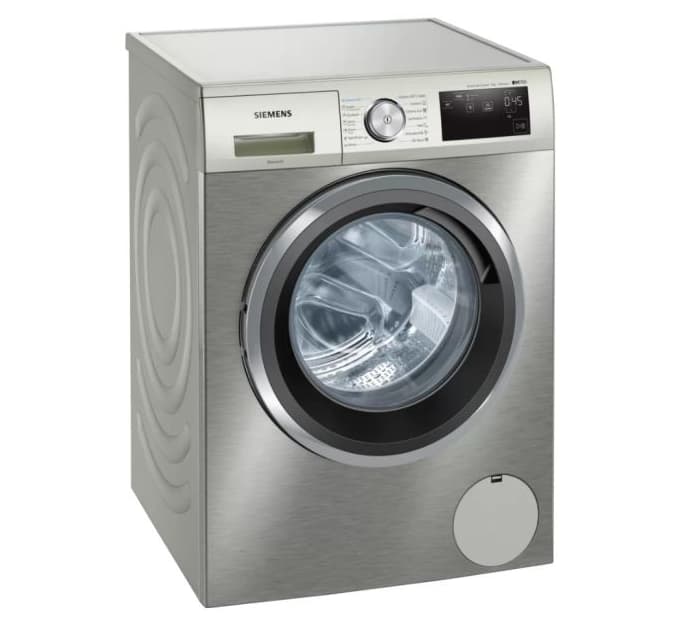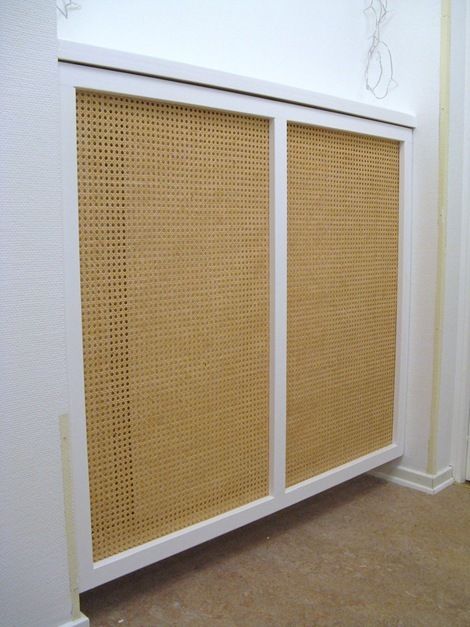Hey there! If you’re trying to reset your Siemens washing machine, you’ve come to the right place. Resetting these machines can be tricky if you don’t know what you’re doing, but I’ll walk you through the whole process step-by-step.
Siemens Washing Machine Reset Button

Why Do You Need To Reset a Siemens Washing Machine?
Before we dive into the nitty gritty of actually resetting the machine, let’s chat about why you might need to reset it in the first place. There’s usually one of three reasons:
- You’re getting error codes and weird behavior. This is the most common reason. Resetting can often clear out glitches in computerized programming.
- You want to restore the factory default settings. If someone has changed any customized options, resetting will take it back to the original out-of-the-box programming.
- You’re troubleshooting other suspected problems. Resetting is often one of the first steps appliance repair technicians will try when diagnosing issues. You’d be surprised how often it works!
The Many Reset Buttons on a Siemens Washer
Now, before I tell you how to actually reset your particular model, let me explain why this can be so confusing. Siemens washers have up to THREE different reset buttons, depending on the specific model! They are:
- Power button: This button turns the machine fully on and off.
- Program button: This one resets any running cycle.
- Drain button: This resets errors and drains water from the drum.
So yeah, it’s kinda complicated! That’s why I’ll walk you through each model’s buttons specifically in a bit.
The Reset Procedure for Siemens IQ Series Washers
If you have a fairly modern Siemens washer with an IQdrive motor, the reset process is thankfully pretty straightforward. Here are the step-by-step instructions:
- Press and hold the Start/Pause button for 5 full seconds. This serves as the power button on these models.
- While still holding the Start/Pause button, turn the program dial clockwise one click over to the Cottons/Colors cycle.
- Keep holding the Start/Pause button for a few more seconds, then release it.
And that’s it! This resets the electronic control board and clears any errors. It should only take about 15-20 seconds total.
After resetting an IQdrive washer, I recommend running a test cycle with no clothes to make sure everything is functioning properly. Choose the Quick 30 cycle and let it run through the whole thing. If it completes with no issues, you’re good to start washing again!
Resetting Older Siemens Models
If you have an older Siemens washer without the IQdrive motor, the reset process is a bit different. Most models have a dedicated Reset button, usually labeled with a triangle symbol. Here’s what to do:
- Press and hold the Reset button for 5 full seconds.
- After 5 seconds, the display should clear and you’ll hear a beep.
- Release the Reset button.
- Use the program dial to select any washing cycle.
- Press Start to begin a test cycle with no clothes.
The key things to note are holding that Reset button down a full 5 seconds, waiting for the beep, and then choosing any cycle before starting a test run. That sequence is crucial to properly reset the electronic control panel.
Troubleshooting Problems After Resetting
Hopefully after completing the reset, your Siemens washer will be functioning normally again. But occasionally, you might still have issues even after a reset if there is an underlying problem.
Here are a few things to check if your washer still isn’t working right:
- Make sure it’s plugged in securely and the outlet has power. Test with another appliance like a lamp.
- Check error codes again in case a new one has appeared. Write down the exact code.
- Remove excess suds or water from the drum before testing. Too much of either can impact functioning.
- Contact Siemens customer service and provide the error code and model number. There may be a tech bulletin about your specific issue.
If problems persist after checking everything, then there is likely an internal hardware failure requiring a service appointment. But fortunately resetting fixes most Siemens washers most of the time.
Your Front-Loading Siemens Washer Deserves Some TLC Too
Well, we covered a ton of ground there on resetting your Siemens washer! As you can see, it’s not quite as simple as pushing one button.
I wanted to wrap up with some quick cleaning and care tips to keep your front loader running well between resets. While resets are great at clearing software glitches, they can’t solve mechanical problems down the road if you don’t care for the machine properly.
Here are my top three suggestions:
- Wipe and inspect the door gasket regularly for mold. Run a monthly tub clean cycle.
- Never close the washer door tightly between uses. This allows air circulation to prevent mildew smells.
- Level the unit properly so the door seals correctly. Unbalanced spin cycles put mechanical strain on components.
On the Topic of Detergent in Siemens Washers…
Now that you know how to reset your Siemens washer if it’s acting up, I wanted to switch gears a bit and talk detergent. I know, kind of a boring topic! However choosing the right laundry detergent in your front-loader can make a huge difference in reducing odors, excess suds, and even mechanical problems over time.
So don’t tune out just yet! This stuff might spare you from needing resets as often if you get your detergent right. Let me tell ya a few things I’ve learned:
HE vs. Standard – There IS a Difference!
First up is understanding high-efficiency (HE) detergents formulated specifically for front-loading washing machines, then choosing the right one:
- HE detergents make WAY less suds. This allows an HE washer to use less water while still cleaning effectively. Too many suds = problems!
- Standard detergents usually have added optical brighteners to make clothes appear more white. But this actually leaves tacky residue.
- Some HE options contain cleaning enzymes to help break down soils at lower temperatures while being gentler on fabrics.
So which to choose? An actual HE liquid detergent like Persil, Tide, Gain, All, or Purex. Plus they now come in cool single-dose PODS if you hate pouring messy liquid. Stay far away from old-school powdered detergents though!
Figuring Out Water Hardness
Water hardness makes a huge difference in cleaning performance and suds production. You should test your tap water, then choose detergent formulated accordingly:
- Soft Water – 0-60ppm hardness
- Medium Hardness – 61-120ppm
- Hard Water – Over 120ppm
Your local water company has hardness details on their website or in annual consumer confidence reports. Or you can easily test this yourself with inexpensive test strips.
Why does it matter so much? Hard minerals in the water can leave scale on internal machine parts over time. Plus the right detergent formulation helps counteract hard water so it effectively cleans clothes. Testing lets you choose the best one for YOUR situation.
Adding a Water Softener
If your home has extremely hard water, you might even consider adding an in-line or whole-house water softener. This additional filtration removes much of the minerals that make water “hard” to provide these benefits:
- Fewer suds and better cleaning performance from HE detergent
- Noticeably softer feeling laundry without stiffness
- Longer lifespan of washing machine parts without scale buildup
- Additional uses like softer skin and hair, easier house cleaning, etc
Water softeners come in all shapes and sizes (and prices!). But protecting your investment in an expensive Siemens washer can make it worthwhile long-term if you live in a hard water area. Something to consider at least!
Cleaning Washer Parts and Running Maintenance Cycles
No matter what detergent you settle on, residues will inevitably build up inside your washer over time. That’s why regularly cleaning parts and running special cycles is so crucial:
- Always wipe excess detergent, dirt, and lint from the rubber gasket after washing. This helps prevent musty smells from bacteria.
- Check and scrub the detergent dispenser if it seems clogged. Modern pods have made this issue rare though.
- Run a hot monthly tub clean cycle with afresh or bleach to sanitize Interior parts with no clothes inside.
- Consider replacing inlet hoses every 5 years to avoid bursting leaks as rubber ages, especially the hot water hose.
Did I really just dedicate over 500 words to DETERGENT in a Siemens washer article? Sure did! It may not be glamorous, but getting these key steps right will save you so much hassle and frustration in the long run. A clean washer equals happy washing for years to come!
Common Error Codes and What They Mean
Now that we’ve covered resetting a Siemens washer and some best practices to keep it running smoothly, I wanted to arm you with some knowledge about error codes. That way if your machine does throw one, you’ll have an idea where to start troubleshooting!
These advanced washers have internal computers that continually monitor operations. When they detect a problem, they assign a numeric code. Of course, it’s not always obvious what said code MEANS…but that’s where I come in!
Let’s go through some of the most common Siemens washer error codes and what they typically indicate:
- E10 – Water Inlet Problem
This simply means the computer expected water to enter the drum, but the flow sensor isn’t registering it. First, inspect your water connections to confirm both hot and cold supply hoses are open all the way and not kinked. Make sure the water shutoff valves behind your washer are fully open too. Still an issue? The inlet valve itself might be bad and require replacing.
- E11 – Drain Issue
Essentially the opposite of E10, the drain error occurs when the washer isn’t emptying water out properly. First, check and clear any blockages in the drain hose as well as your home’s pipes that it connects to. Debris catching in the internal drain pump filter also commonly causes E11 errors. You’ll have to open up the bottom panel to access and clean it out. Watch some YouTube tutorials to see exactly how!
- E12 – Motor Not Spinning
This code indicates the drive motor either isn’t starting at all or has stopped unexpectedly during operation. Open the door when safe and verify all the clothing is freely tumbling. If it’s not spinning well or making horrible grinding noises, you likely need internal parts replaced like the motor capacitor, carbon brushes, or entire motor itself in severe cases. Time to call Siemens service or a trusted appliance repair company for this one!
- E14 – Control Board Fault
Also dubbed the “PCB failure code”, E14 signifies an internal electronics issue rather than a mechanical component failure. It often appears randomly even when the machine seems totally normal otherwise. First off, ALWAYS reset an E14 code twice to try clearing it. But the main control board may unfortunately need replacing if that doesn’t do the trick. At least boards come separately instead of replacing a whole new computer!
- E21 – Door Not Locking
This code indicates a problem with the electric door lock mechanism not allowing the washer to start wash cycles. If clothes or objects are crammed too tightly near the door opening, remove them and try to begin a cycle again normally before assuming the worst. However, a non-locking door is most likely due to the failure of the complex electrical latch assembly itself. Another common part warranty companies replace modern front-load washers after several years.
There are DOZENS more Siemens washer error codes beyond these top common ones! My best advice if you encounter ANY strange code is to jot it down, then call Siemens support with your model number handy to inquire further. Their tech experts can better diagnose situations over the phone before you need complex servicing.
Aftermarket Extended Warranty Considerations
Faulty control boards, drain pumps, door locks, and the like. As you can see from typical error codes, there are a LOT of electronics packed into these high-tech washers! Once your initial 1-2 year Siemens factory warranty expires, repairs for complex part failures can get very expensive.
That’s why I always recommend considering an extended appliance warranty during at least the first 5 years of ownership. Reputable third-party warranty companies that offer coverage for Siemens washers include:
- American Home Shield (AHS)
- First American Home Warranty (FAHW)
- Choice Home Warranty
- Select Home Warranty
- Old Republic Home Protection (ORHP)
Rates vary wildly based on your washer model, location, and length of coverage desired. But expect something in the $300-500 range for 4-5 years of repair coverage including labor, parts, and full replacement if your washer ever tanks completely. Not a bad investment given how pricey these washer repairs run outside of warranty!
Siemens Customer Support:
Also Check:
- Hisense Washing Machine Reset Button
- Logik Washing Machine Reset Button
- Haier Washing Machine Reset Button
- GE Washing Machine Reset Button
Conclusion:
Alright, my friends…I realize I just dropped a whole textbook worth of Siemens washer knowledge on you today! Clearly, I’m pretty passionate about appliances and keeping things running well with some preventative care.
So please hit me up if you have ANY other questions going forward – error codes, maintenance worries, buying a warranty, and anything else washer-related!
I’ll be here waiting and happy to help however I can. Over and out until next time!


